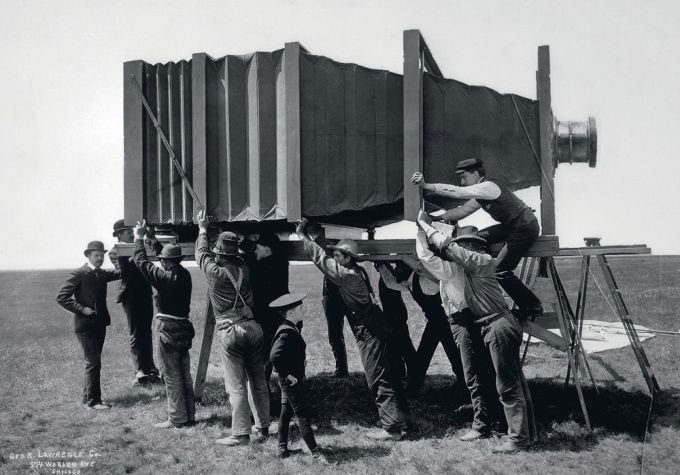Over 100 years ago, photographer George Raymond Lawrence created a camera weighing 635 kg to capture a panoramic image of a special train.

The Mammoth Camera was designed to photograph the Alton Limited train. (Photo: Amusing Planet)
In 1899, the Chicago & Alton Railroad introduced a new rail service between Chicago and St. Louis with the Alton Limited, a train that was billed at the time as the “Most Beautiful Train in the World.” According to the company, no other train in the world had such a uniform and symmetrical design. All the windows were of the same size, shape, and style from the mail car to the passenger car. Each car had the same exact length and height, even the coal car of the locomotive was as tall as the cars behind it, and the hood of the locomotive was as high as the roofs of the regular cars.
Shortly after the Alton Limited was launched, the Chicago & Alton Railroad decided to participate in the 1900 Paris Exhibition. They aimed to impress the public with the unprecedented symmetry of their train. However, instead of transporting the entire train to France, the company decided to create a massive photograph for display. They hired the outstanding photographer George Raymond Lawrence, who operated a studio in Chicago, to undertake this task.
The Chicago & Alton Railroad wanted to capture a photograph that showcased the entire train. Initially, Lawrence suggested photographing each section separately and then combining them during printing. However, the company rejected this proposal and insisted on a perfect image of their perfect train. They also emphasized that the length of the photograph could not be less than 2.4 meters.
Accepting the challenge, Lawrence collaborated with camera manufacturer J. A. Anderson. Within eight months, they designed and built the Mammoth Camera – a gigantic machine weighing 635 kg and requiring 15 people to operate. When fully extended, the camera box measured 6 meters in length.
The lenses of the Mammoth were among the largest ever made for photography, produced by the optical company Bausch and Lomb in Rochester, New York. There were two lenses: one wide-angle lens with a focal length of about 1.7 meters, and the other a rectilinear lens with a focal length of approximately 3 meters. The camera used a glass negative plate measuring 2.4 m x 1.4 m, nearly three times larger than contemporary panoramic cameras. The Mammoth was so large that before exposure, a person could step inside and wipe dust off the glass. Anderson referred to it as the largest camera in the world.

The Alton Limited train. (Photo: George Raymond Lawrence).
After months of planning and preparation, on a spring morning in 1900, the Mammoth camera was carefully transported on a flatbed truck to Brighton Park. Subsequently, a padded truck brought the camera to the appropriate position in the open field. The Alton Limited train was parked in the distance. After pointing the camera at the train on the tracks, four people proceeded to attach the giant glass plate, while six others operated the camera box and the lenses. Lawrence removed the lens cap, and after a two-and-a-half-minute exposure, he replaced the cap, completing the exposure.
Lawrence produced three giant prints from the negative film and sent them to Paris for display. One print was hung in the U.S. Government Building, another at the railway exhibition, and the last in the photography section. Initially, the competition judges were skeptical as no one had ever seen such a large photograph. They speculated that it was merely a composite image. It was only after verifying the existence of the Mammoth camera and observing how it operated that the organizers were convinced. Ultimately, the photograph earned Lawrence the “Grand Award of the World for Outstanding Photography.”





















































